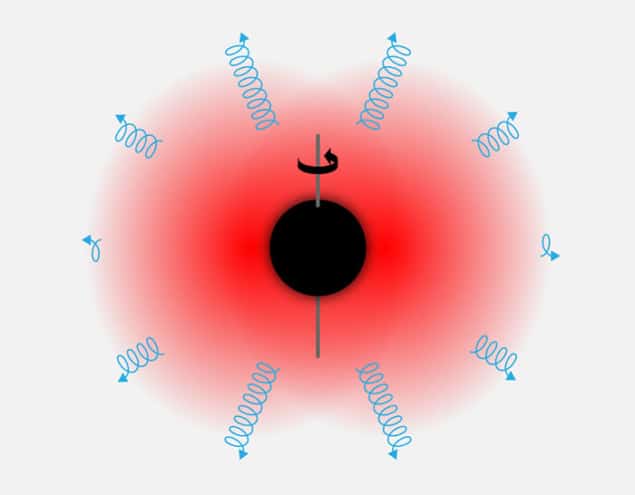
A potentially explosive phenomenon called superradiance could give black holes hair – according to William East of the Perimeter Institute for Theoretical Physics in Canada and Frans Pretorius of Princeton University in the US. Their claim relies on the existence of an extremely light particle and could be confirmed by detecting gravitational waves associated with the hair.
Black holes famously have “no hair”. This is the conventional idea that a black hole can only be described in terms of three quantities: mass, angular momentum and charge. All other physical properties (the hair) of the stuff that has been sucked into a black hole are lost forever. Evidence for the no-hair theorem has been seen by LIGO, which has detected the gravitational waves produced when two black holes merge.
However, the idea of having no hair does not sit very well with basic principles of quantum mechanics and as a result, the possibility of black-hole hair is an active area of physics research.
Black-hole bomb
Another curious phenomenon associated with black holes is superradiance. This involves particles and electromagnetic radiation scattering from a spinning black hole and gaining energy and angular momentum in the process. If this radiation is reflected back at the black hole, a runaway explosive process called a “black-hole bomb” could develop.
For this process to occur spontaneously there must exist a hitherto unknown boson particle and associated field. Furthermore, the mass of the boson must be extremely low – about 10–17 that of the electron. As a result, the observation of runaway superradiance in black holes could signal the existence of physics beyond the Standard Model of particle physics – perhaps providing an explanation of dark matter.
Quasistable state
Now, East and Pretorius have done detailed simulations of this process for a spinning solar-mass black hole with zero charge. They have found that rather than being explosively unstable, superradiance can settle into a quasistable state in which about 9% of the black-hole’s mass/energy is transferred to a field of hypothetical bosons that becomes trapped around the black hole.
This bosonic halo is called a “Proca cloud” and can be thought of as “long hair” that persists for a relatively long time and also extends out beyond the event horizon of the black hole. Black holes with such hair are expected to broadcast gravitational waves at a specific frequency – and in principle these could be detected by LIGO or perhaps the upcoming space-based LISA gravitational-wave detector.
The simulations are described in Physical Review Letters.



